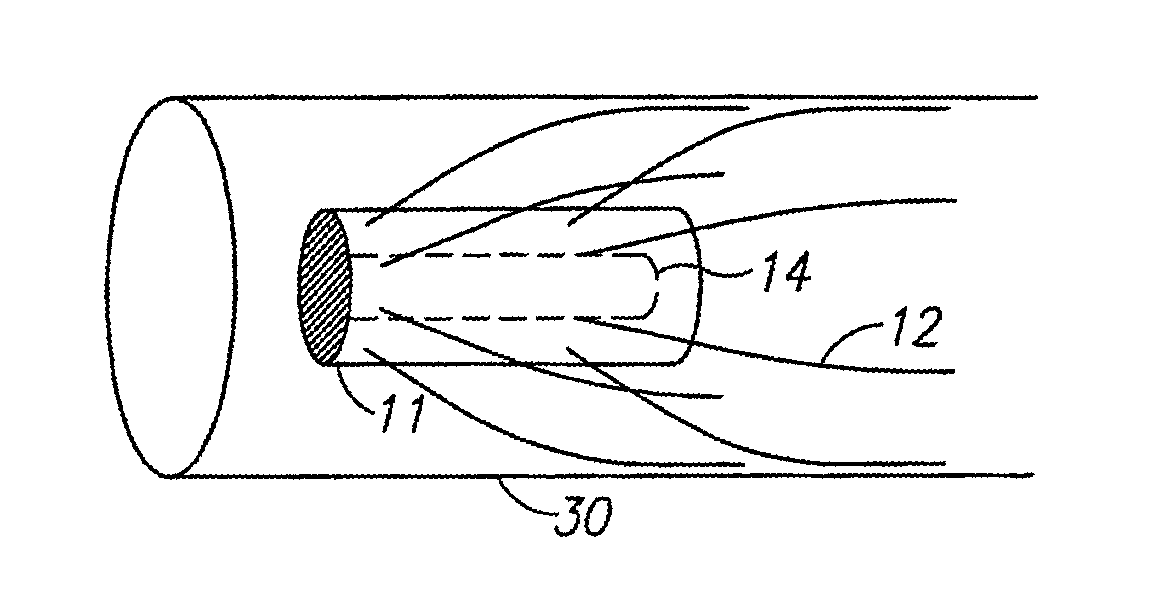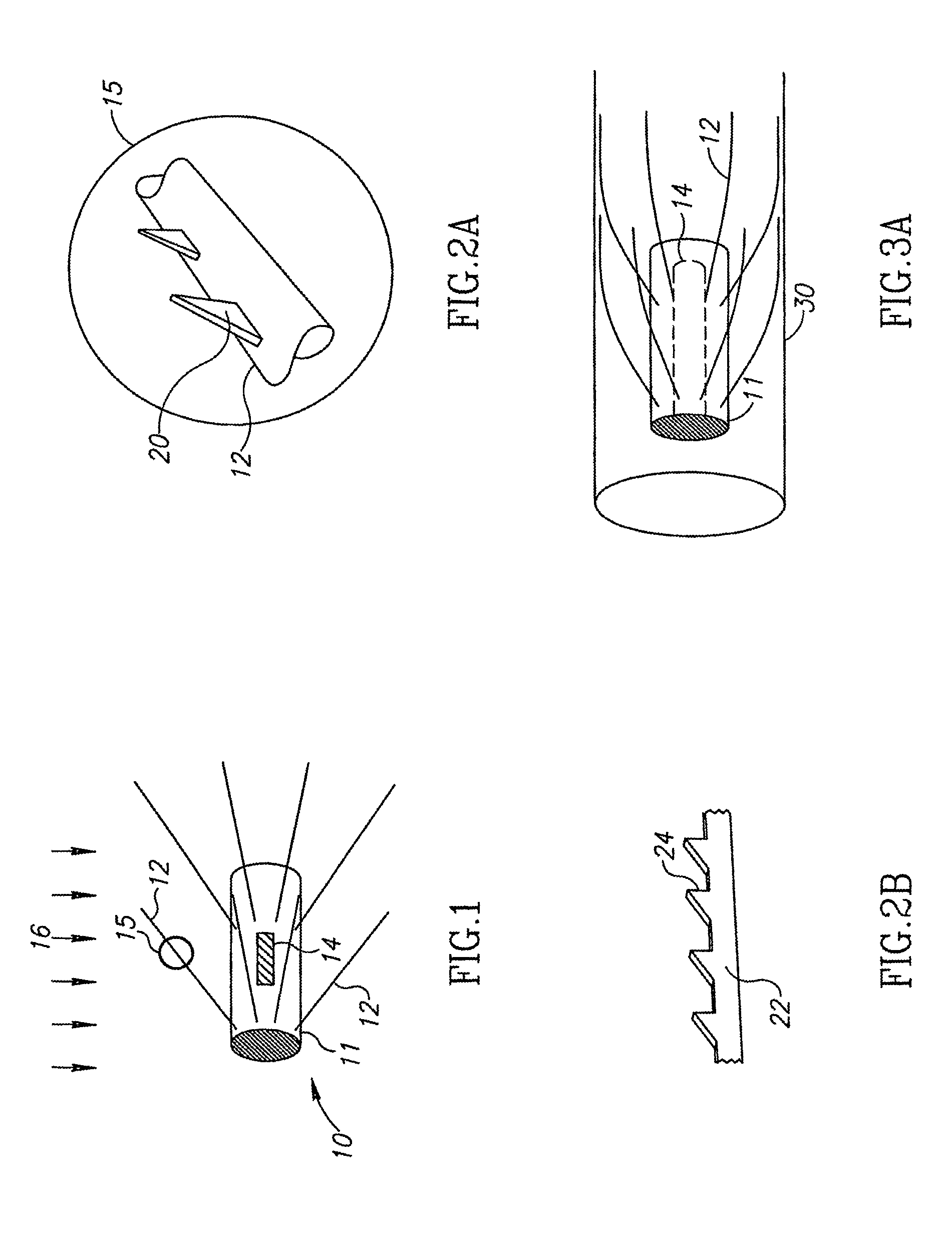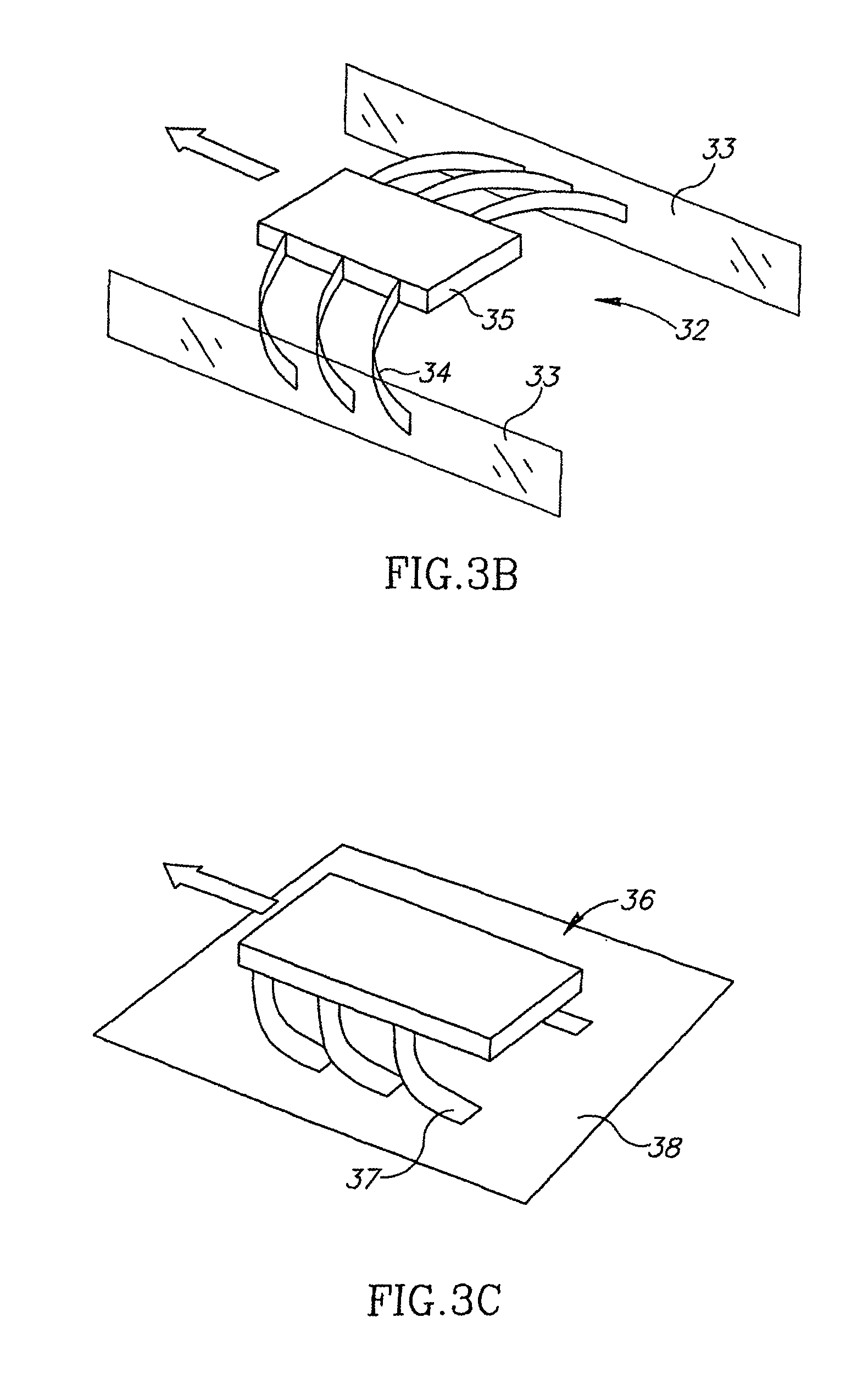Vibrating robotic crawler
a robotic crawler and crawler technology, applied in the field of robotic devices, can solve the problems of limiting miniaturization, complicating operation, and most methods commonly used cannot operate in confined spaces, and achieve the effects of increasing rigidity, increasing normal force, and optimizing and constant friction for
- Summary
- Abstract
- Description
- Claims
- Application Information
AI Technical Summary
Benefits of technology
Problems solved by technology
Method used
Image
Examples
Embodiment Construction
[0054]Reference is now made to FIG. 1 which illustrates schematically an example of a linear motion vibrating robotic crawler 10 according to one aspect of the present invention. To the body 11 of the device may be attached a number of flexible fibers 12 having superficial anisotropic friction with the opposing surface relative to which the robotic crawler is intended to move. The fibers are attached to the body such that they are generally oriented at angles having the same sense to the axis of the body 11. In FIG. 1, the fibers are all shown oriented to the right of the drawing, meaning that they make an acute angle with the axis in the direction towards the right of the drawing. Although the fibers are all shown inclined at the same attachment angle in FIG. 1, this is not an essential condition for the operation of the device, and it will function so long as a majority of the fibers are generally inclined in one direction relative to a plane perpendicular to the axis of the body....
PUM
 Login to View More
Login to View More Abstract
Description
Claims
Application Information
 Login to View More
Login to View More - R&D
- Intellectual Property
- Life Sciences
- Materials
- Tech Scout
- Unparalleled Data Quality
- Higher Quality Content
- 60% Fewer Hallucinations
Browse by: Latest US Patents, China's latest patents, Technical Efficacy Thesaurus, Application Domain, Technology Topic, Popular Technical Reports.
© 2025 PatSnap. All rights reserved.Legal|Privacy policy|Modern Slavery Act Transparency Statement|Sitemap|About US| Contact US: help@patsnap.com



